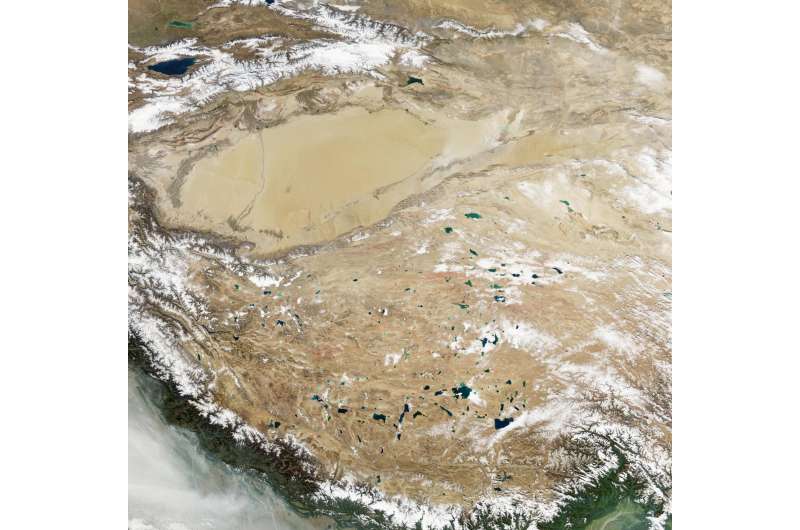Millet farmers adopted barley agriculture and permanently settled the Tibetan Plateau

The permanent human occupation on the Tibetan Plateau was facilitated by the introduction of cold-tolerant barley around 3600 years before present (BP), however, how barley agriculture spread onto the Tibetan Plateau remains unknown. Now by using both genetics and archaeological data, researchers from Kunming Institute of Zoology, CAS and Lanzhou University revealed that barley agriculture was mainly brought onto the plateau by the millet farmers from northern China. Moreover, the genetic contribution from millet farmers largely promoted the formation of the genetic landscape of the contemporary Tibetans. The work was reported on-line in the journal National Science Review.
According to archaeological evidence, before the permanent settlement of modern humans on the high altitudes of the plateau, the lower altitudes in the northeast Tibetan plateau were extensively occupied by millet farmers during 5200 to 3600 BP. Interestingly, towards the end of this period (since about 4000 BP), a coexistence of indigenous millet and exotic barley-wheat cultivation appeared in the area, making it probable that the millet farmers adopted barley agriculture and further migrated onto the high altitudes.
To test this possibility, the team analyzed large-scale mitochondrial DNA (mtDNA) data of current Tibetans (8277 samples) and the surrounding populations (58514 samples). Together with radiocarbon dating of cereal remains at different elevations, they identified two haplogroups (M9a1a1c1b1a and A11a1a), whose origins and migrations well matched the dispersal history of millet farming from northern China. Moreover, these components were also found in ancient DNA of human samples excavated from Neolithic sites in which millet was the most important crop (e.g., Yangshao and Majiayao cultural sites), thus would represent the genetic legacy of millet farmers that is still retained in contemporary Tibetans.
Additionally, these millet farmers' genetic components are common in contemporary Tibetans (20.9%), and were probably even more common (40%-50%) in early Tibetans at about 3300 BP (when the barley farmers had already settled on the high altitudes). Meanwhile, these components also contributed to the genetic differentiation between contemporary Tibetans and other East Asians. Therefore, the genetic contribution from Neolithic millet farmers played important roles in the formation of the genetic landscape of the current Tibetans.
These results demonstrate that substantial genetic components in Tibetans trace their ancestry back to the Neolithic millet farmers. The most probable explanation for this observation is that the millet farmers adopted and brought barley agriculture to the Tibetan Plateau and finally occupied the high altitudes permanently. This work thus provide deeper insights into the dispersal model of barley agriculture onto the Tibetan Plateau, as well as the origin and migration history of the Tibetans.
More information: Yu-Chun Li et al, Neolithic millet farmers contributed to the permanent settlement of the Tibetan Plateau by adopting barley agriculture, National Science Review (2019). DOI: 10.1093/nsr/nwz080
Provided by Science China Press




















